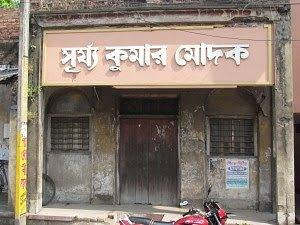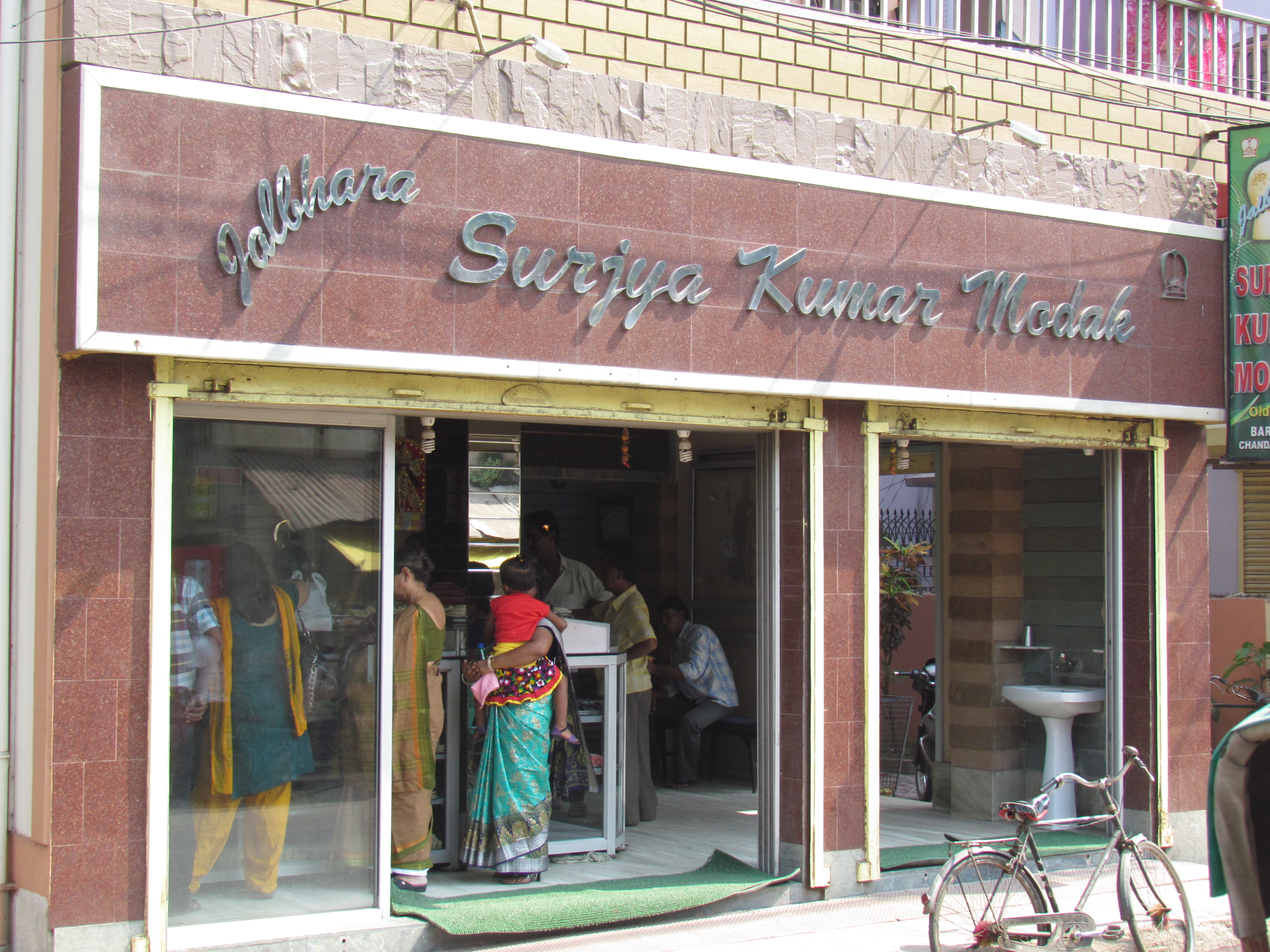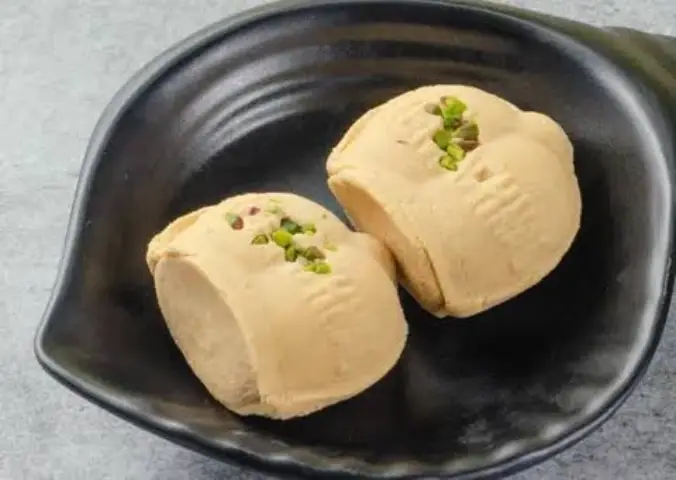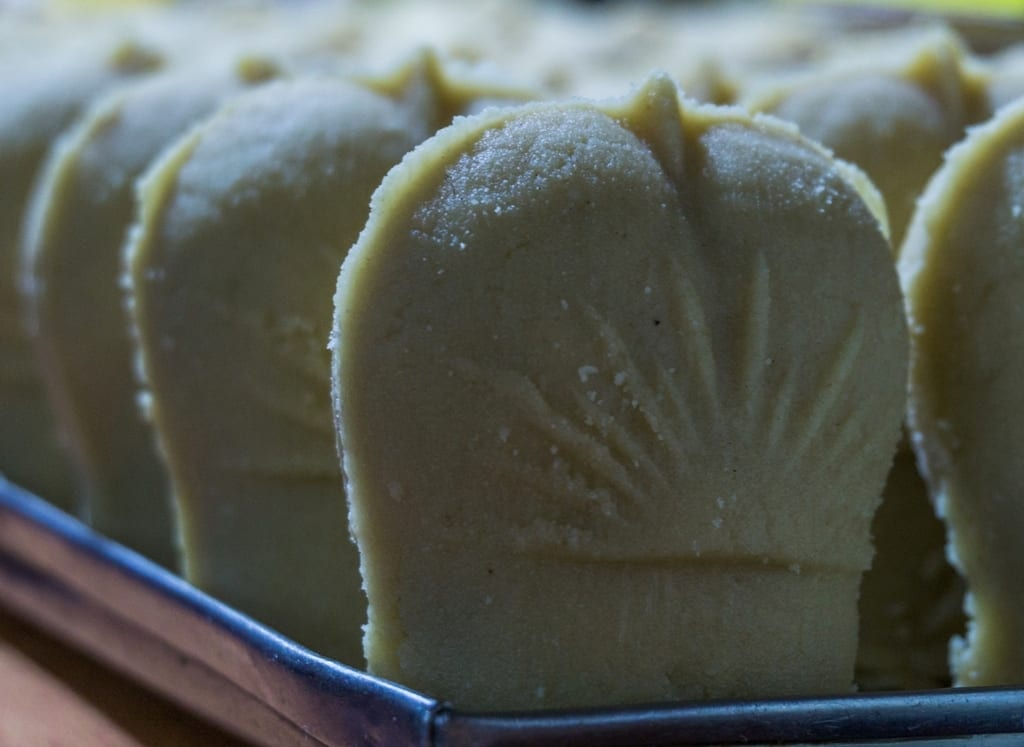
Origin
Bengali sweetmeats are more than an art or a craft. It is an essential component of the lifeworld of Bengali middle-class nested in the village communities. It was from this domestic life in the small villages, that the Bengali sweets emerged. The self-proclaimed cosmopolitan gastronome, Hirankumar Sanyal opined:
We will definitely take pleasure in new food, in the new restaurants. But a Bengali’s talent lies in his domesticity and not in his commercial ventures. Hence, there is not a single restaurant for Bengali cuisine in Calcutta. Each Bengali household carries a unique characteristic as far as culinary practice is concerned. Our country excels in the art of gastronomy which flourishes in home. Thus, we need the goddess of this art and your fate will be decided by the proper selection of the mistress of the house.
The colonial period marked the emergence of sub regional histories with the beginnings of a new consciousness. Food history-writing became an act of constructing the material culture of each region of Bengal. Different food writers highlighted a long list of specialties of a particular region. In this process, the sweets became an identity marker of a sub region, relaying the history of each region unfolding alongside the history of these sweets.
Jeelapi was made from green gram and it was popular in the Narajol regin in Nadia, sitabhog and mihidana received patronage from the king of Bardhaman, and a sweetmaker from Bishnupur ivented a type of motichur from gram flour derived from a particular seed. The making of sweetmeat became interlinked with name of certain regions that it became hard to dissociate with one from another. Pantua was a big thing in Ranaghat, khaichur was famous in Dhanekhali, langcha of Shaktigarh’s pride and talsansh was identified with Chandernagore.
Chhana is a substance derived by cutting milk with acid and it is popular amongst both vegetarians (the majority of people in the Indian subcontinent) and fish- and meat- eaters. The concoctions made out of chhana are rosogolla and sandesh. Sandesh is a dry sweet, made in both soft and hard varieties from a dairy product called chhana. The very existence of the traditional sandesh depends on cottage chase or chhana which was brought into Bengal by the Portuguese.
Sandesh was invented at Hooghly by the cooperation of Dutch’s cook of Bandel Church. The term sandesh comes from the Hindi word “sandesh, which means message. The etymology dates back to the tradition in Bengali culture to send this sweet as a gift and hence the name has arrived. It is roughly a combination of milk and sugar. Before the arrival of Portuguese, solidified kheer was used, but the Portuguese chefs introduced the use of cottage cheese (chhana).

Old building

New store
Enter Chandernagore
The Portuguese begin a trading post in Bengal in 1535, followed by the Dutch a hundred years later, in 1636, and in 1673, the French East India Company established a settlement upriver at Chandernagore.
To satisfy the tastes of the western rulers, collective western practices were coopted and amalgamated in the Bengali sweets. The result is a unique sweet, where local ingredients were adapted to french cooking techniques – s—characterized by creamy sauces, the restrained use of spices and new techniques such as baking. The French East India Company was the first to establish a colony at Chandernagore in 1673, situated on the western bank of river Hugli, 40 km north of Kolkata, germinated during the medieval period, advancing the sweet-making initiated by the Portuguese.
The French traveller François Bernier, who lived in India from 1659 to 1666, wrote: ‘Bengal is celebrated for its sweetmeats, especially in places inhabited by the Portuguese, who are skilful in the art of preparing them and with whom they are an article of considerable trade.’ The Portuguese created curds by breaking milk with acidic materials. By the turn of the mod-nineteenth century, Bengali sweet-makers were using chhana as their main ingredient. They experimented by inventing new variants, such as rasgolla, a light spongy white ball of chhana served in sugar syrup; ledikeni, a dark-coloured fried rasgolla; chamcham, patties dipped in thickened milk and sprinkled with grated khoa; pantua, sausage-shaped spheres fried golden brown and dropped in sugar syrup; and sandesh in all its incarnations.
Before it got popular in the metropolis, “rasagolla” was a specialty of the French colony of Chandernagore. Moreover, many Kolkata moira (confectioners) originally hailed from Chandernagore. The French used an acid to coagulate milk to fresh curd cheese.
The trade-villages like Boro-Kishanganj, Gondalpara, Khalisani, etc. were clustered to put up the colony of Farasdanga (faras means French and danga means land), which possessed typical riverine rural character located between the Hugli river and its distributary the Saraswati, a river of medieval era, degenerated at present.
A lasting legacy of shared sweet-making heritage is the sweet shop of Surya Kumar Modak, begun in nineteenth century, is still operational. It gained fame for introducing a special delicacy shaped like the kernel of a Palmyra fruit ‘Jalbhara’ (jaggary filled cottage cheese sweet, Jal means water, bhara implies filling.), appreciated and accepted by both the ‘Bengali babus’ (local Bengali speaking aristocrats) and British alike. A well-known sweet cuisine of Surya Kumar Modak was Talsansh Sandesh (tal is the fruit of the palm tree and sansh is its edible part).
The term “Jolbhora” indicates that water is there inside the core of this dessert sweetmeat. In 1818, the sweetmaker named Surya Kumar Modak designed a king-sized Talsansh (a common dry sweet in Bengal) but incorporated a pinch of fresh, pure rosewater inside the sweet. The water leaked out of it when the bite was made, and thus the name comes as “Jolbhora Sandesh” (typically of 4-5 cm length, 5-6 cm height, and 2–2.5 cm of breadth). In the winter season, jaggery juice (“Nalen gur”) is incorporated in place of rosewater.
The pouring of rose syrup inside the sandesh was the main invention of Surjya Kumar Modak in the year 1881. Surjya Kumar Modak also invented Motichur Sandesh, Aam Sandesh , Khirpully Sandesh at the same time.

Jolbhora sandesh inside a tray
Never-ending savoring.
The arrival of Vasco da Gama from the Western world to India in 1498 set a chain reaction of trade initiation, inroad development, and foritification of settlements. The tangible and intangible agents of different East India Companies between the 17th and the 19th centuries carved an entirely different character to the region of Bengal and left an indelible impact.
The Portuguese were the first to arrive and set up in Bandel, followed by the Dutch in Chinsurah, Danes in Serampore, and the French in Farasdanga, or what was later known as Chandernagore. A French settlement established in 1673 after Subahdar of Bengal under Mughal regime gave permission; Chandernagore became a permanent French establishment in 1688.
The sweets were intangible heritage resources of Chandernagore. They were a deep dive into shared culinary heritage, resulting out of the confluence of cultures, creating culinary wonders of a kind. The original dessert shop of Surjya Kumar Modak in Telenipara, Chandernagore has a rich history. In 1881, while working on an order to prepare a new kind of Sandesh (a sweet hard cottage-cheese delicacy), the confectioner ended up adding rose-syrup into the usually dry capsular honey-comb. This unique item was labeled Jobhora, which was an instant hit with Europeans too. The variants of this sandesh have fillings of chocolate, mango-pulp, and date-jaggery.
The history of sandesh intertwines history and culture. While this write-up focuses on Chandernagore, it doesn’t negate the collaborative efforts, tests and trials of the Europeans culinary craftsmen alongside the Bengali confectioners, who collectively hold the shared colonial heritage of Bengali sweets. The intangible resource, here Jolbhora Talsansh Sandesh, bridges the popular and the educational, highlighting a previously documented thrust for its usage for heritage urban tourism.
Bibliography
- Chaudhuri, Amit. Sweet Shop. Penguin Random House India Private Limited, 2019.
- Dixit, Saurabh Kumar. Tourism in Asian Cities. Routledge, 2020.
- Dutta, Krishna. Calcutta: A Cultural History. Interlink Books, 2008.
- Kar, Nabendu Sekhar, et al. “Urban Heritage Tourism in Chandernagore, India: Revival of Shared Indo-French Legacy.” GeoJournal, vol. 87, no. 3, Nov. 2020, pp. 1575–91. https://doi.org/10.1007/s10708-020-10328-8.
- Krondl, Michael. Sweet Invention: A History of Dessert. Chicago Review Press, 2011.
- Lahiri, Indrajit. “One simple joke and Jolbhora Sandesh.” Mohamushkil, 18 Feb. 2018, moha-mushkil.com/wp-content/uploads/2018/02/Jolbhora_Sondesh.jpg.
- “Our Products.” Jalbhara Surjya Kr. Modak, www.jalbharasurjyamodak.com/products.html.
- Ray, Utsa. Culinary Culture in Colonial India: A Cosmopolitan Platter and the Middle-Class. 2015, ci.nii.ac.jp/ncid/BB18514552.
- Sarkar, Tanmay, et al. “The Essence of Bengal’s Ethnic Sweetmeats: An Exploratory Journey Through History, Tradition, and Culture.” Journal of Food Quality, vol. 2023, Feb. 2023, pp. 1–23. https://doi.org/10.1155/2023/5008420.
- Shimul. The Foodscape: Tejgaon, Dhaka. 1 Dec. 2015, hdl.handle.net/10361/4529.
- Surjya Kumar Modak. www.jalbharasurjyamodak.com/about.html.
- “—.” Trip Advisor, www.tripadvisor.in/Restaurant_Review-g1602177-d7992299-Reviews-Surjya_Kumar_Modak-Chandannagar_Hooghly_District_West_Bengal.html.
- “Surjya Kumar Modak (Chandannagore, West Bengal).” Yummraj, 2 Nov. 2012, yummraj.com/2012/11/02/surjya-kumar-modak-chandannagore-west-bengal.
- Walker, Harlan. Milk– Beyond the Dairy: Proceedings of the Oxford Symposium on Food and Cookery 1999. Oxford Symposium, 2000.




















